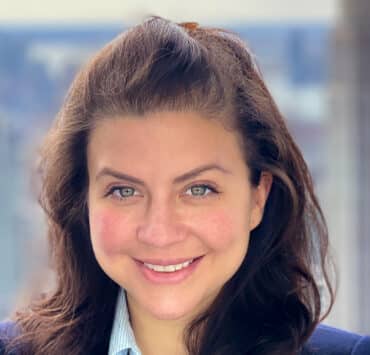|
Getting your Trinity Audio player ready...
|
Like any executive on a tight schedule, Jorge A. Celaya cuts to the chase.
“As much as I like to go as fast as possible . . . I’ve learned over the years to be more patient.”
The Cuban American—executive vice president and chief financial officer of Liquidity Services—does more than just manage financials. He has been an integral part of leading business transformation, while also leading teams that execute, manage, and analyze business and financial results. Liquidity services is a B2B e-commerce company with over $10 billion transacted.
While his experience across varying industry sectors and executive roles has been extensive, Celaya has been on the forefront of technology-enabled business services for three decades, architecting processes to support the growth of tech-enabled services and operations and developing and implementing strategic objectives. And he hasn’t let his day-to-day responsibilities impede innovative change.
“Complacency can sink a business,” Celaya explains. “You should embrace change while finding what you do well and then do more of that. What you don’t do so well, have the courage to stop doing. One has to adapt. And the more one asks why, the more insight one has into what strategic course to take. Do not be afraid of change, and be uncomfortable without it—that is how transformation works best.”
“Own up and [don’t] be afraid to say that you haven’t understood. So be inquisitive. Even if you think you do know, dig in until it makes sense.”
Jorge A. Celaya
While “innovative” is not the first word one might use to describe a CFO, Celaya fits the bill and feeds his passion for results-driven transformation. Because he is relentless when it comes to pursuing constructive change for the long haul—and simultaneously tries to anticipate and manage risks—he is constantly balancing his financial expertise with operations and business acumen to bring unique leadership to an organization.
When Celaya joined Liquidity Services in 2015, the B2B e-commerce marketplace was just kicking off its own digital transformation, with planned investments in software and R&D. Celaya saw this as a great opportunity to contribute to a broader business transformation and use underlying financial data to support strategic change. As Celaya likes to say, “The numbers tell a story.”
Hispanic Executive caught up with Celaya in 2018 just a few years after he joined the company. At the time, he was focused on relentless improvement—and he is still at it today.
And here’s the icing on the cake: when the COVID-19 pandemic took hold, Liquidity Services was well positioned with the platform, tools, and resources it needed to allow its clients to transact remotely and to allow employees to support customers remotely.
“The interesting thing is that this multiyear strategic transformation was hitting its stride right before the pandemic hit, which made our business ready for transacting in remote environments,” Celaya says. “People could continue to work, transact, and get access to the products and assets they needed. We had our core technology platform in place by the end of 2019, ready to service our customers. We had executed on our strategy.
“The more one asks why, the more insight one has into what strategic course to take. Do not be afraid of change, and be uncomfortable without it—that is how transformation works best.”
Jorge A. Celaya
“Transformation, by definition, requires change. It’s hard to make change happen if you don’t get people to buy in,” Celaya continues. “As a CFO, you should use your skills as a financial expert to give confidence in the strategic direction and move the needle.”
Buy-in is also how Celaya identifies and uses information that matters. He makes time to bounce ideas off his coworkers because he values their feedback. Then he leverages their feedback and inches closer toward a solution that shapes a winning strategy.
For Celaya, this means validating performance in the numbers. “Accountants put numbers together, but one has to get into the analytics and move the numbers to look at them in all kinds of ways—varying angles, upside down, whatever—and then ask questions. Ask why,” Celaya says. “Ask a lot of questions to ensure that the business can connect what they’re doing and what the company does for a living with reality.”
With Liquidity Services entering the next phase of its business evolution, Celaya can fall back on his own advice.
“I’ve found the better approach is to own up and not be afraid to say that you haven’t understood. So be inquisitive,” Celaya says. “Even if you think you do know, dig in to make sure it makes sense. Whether it’s an engineer or a marketing person, assume they know their business and ask questions to see where they take you.”

